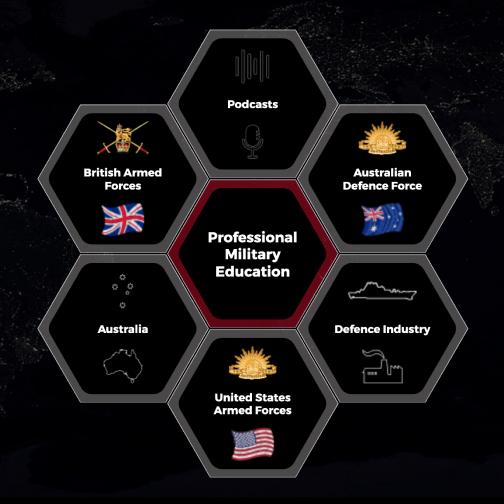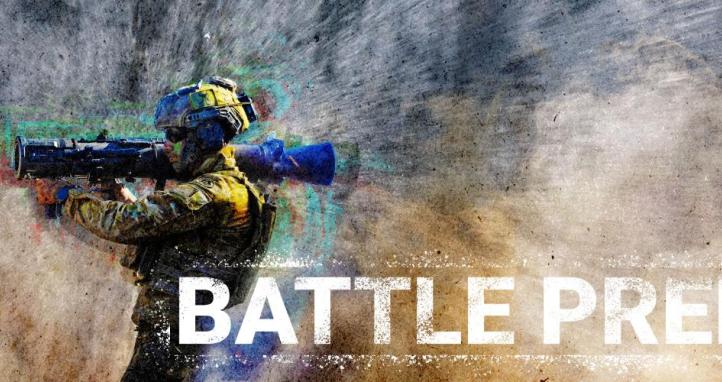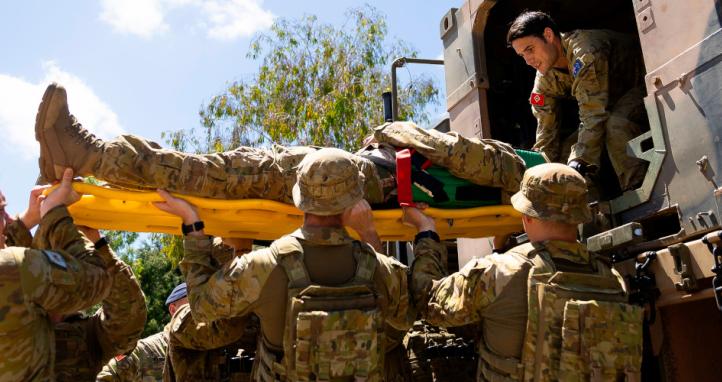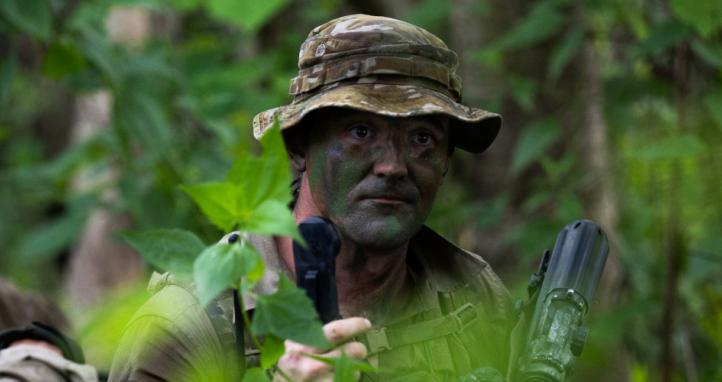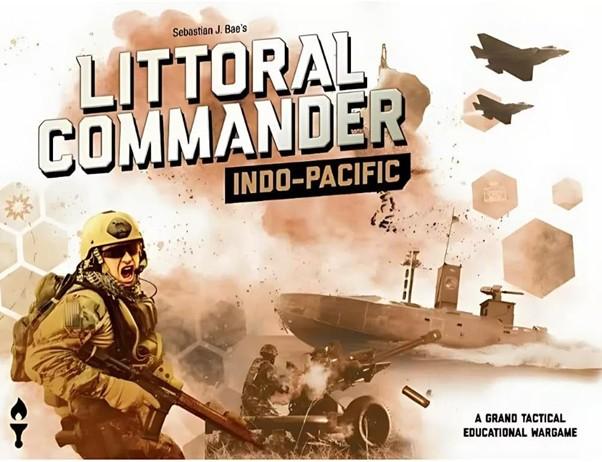
The Australian Defence Force has a Professional Wargaming Guild. The Guild aims to connect like-minded professional gamers across Defence and the national security environment. This year, the Guild launched a ‘campaign of wargaming’ to foster a greater professional understanding of a game and to provide feedback to Defence regarding the validity of a specific game system.
This article is about what we learned about the game Littoral Commander: Indo-Pacific and the official ADF expansion Littoral Commander: Australia. The guild is not the first organisation to review Littoral Commander: Indo-Pacific. There are reviews by the Australian Army Research Centre, Boardgame Geek, Rocky Mountain Navy Gamer and the US Navy Institute.
The Guild chose this wargame to review because of its relevance to the 2024 National Defence Strategy (NDS 24). The document highlights the Government’s focus on ‘the acquisition of conventionally-armed, nuclear-powered submarines, the transformation of the Army into one focused on littoral manoeuvre, investments in long-range strike capabilities and the enhanced lethality of Navy’s surface combatant fleet’. All of these elements are covered in this game.
Design. Before we delve into the enjoyment of wargaming (sinking the enemy player’s ships), we need to briefly discuss the learning benefits linked to properly selected, designed, and conducted wargames. Wargaming has a rich history as a significant tool for military training, education, and research. Military wargaming focuses on human decision-making. It serves as a decision-making technique that offers structured, yet intellectually liberating, safe-to-fail environments to explore what works (winning/succeeding) and what does not (losing/failing), typically at a low cost with minimal risk.
So, it is important to understand what this wargame was designed for and to do that, you need to understand its designer: Sebastian Bae. Bae joined the USMC as a reserve Marine infantryman in 2007. He was always passionate about wargames and noted that the Marines wanted even infantrymen to understand Expeditionary Advanced Base Operations, and Force Design 2030 changes. Interviewed in the Marine Times he stated: “I wanted Marines to understand Force Design 2030 and why these changes were happening and why the commandant was making the changes he was”. So, after years of wargaming, in 2019 Bae started building his own game – Littoral Commander.
System overview. Littoral Commander is a 2 to 6-player educational wargame that explores future concepts, technologies, and all-domain warfare. The wargame is crafted to be accessible to players of all levels (remember it was designed by a marine infantryman). With a simple yet dynamic game system, Littoral Commander delivers fast-paced, engaging, and flexible gameplay for both education and training. The purpose of Littoral Commander is to provide a rich and interactive “intellectual sandbox” for curious minds to examine and tackle the daunting challenges of the future operating environment. As someone who has used it for the wargaming component of Joint Military Appreciation Process Course of Action Development, it is easy to tailor the wargame’s scenario to fit the specific objectives of the game.
Key mechanics. The structure and gameplay of Littoral Commander consists of four main stages: planning, deployment, player actions (including combat), and checks for initiative and victory. The planning stage is crucial as it helps reinforce an important skill we learn in training but do not regularly practice. Opposing teams, made up of one to three players each (totalling six players), take turns commanding their forces in a high-tactical engagement to achieve objectives defined by the wargame’s scenarios. Teams are expected to meet their assigned objectives with limited or episodic support from higher command (simulated through Joint Capability Cards), while also recognising that broader events beyond their control may influence the outcome of the battle.
Opposing teams grapple with controlling key terrain, maintaining initiative, and thwarting their opponent’s progress, all while chasing their own mission objectives. When faced with a near-peer opponent, teams must leverage a range of capabilities across multiple domains to secure victory. The thin line between victory and defeat hinges on superior decision-making and a combined arms mentality across all domains. This is another design feature of the game. The player who intelligently combines the multi-domain effects with conventional manoeuvre and fires generally wins. The paragraphs below expand on the key visualisation, system themes, and ease of playing.
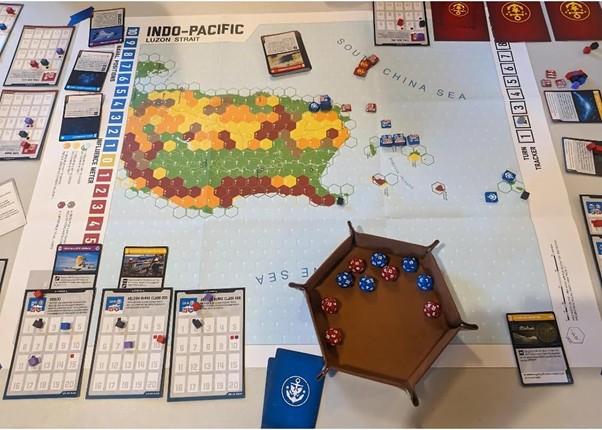
Key visualisation. The Littoral Commander map is divided into 20 km hexes. The border of each hex indicates its Movement Point (MP) cost. Blue-bordered hex sides require 1 MP, green sides require 2, yellow sides demand 3, orange sides necessitate 4, and red-bordered tiles are impassable. Additional symbols denote whether a hex contains a city, town, or airfield.
Each unit in Littoral Commander is represented by a cardboard token (you can also buy separately standing blocks). When the unit is hidden, the backside displays the People’s Liberation Army Navy Marine Corps (PLANMC) or U.S. Marine Corps (USMC) team insignia. The frontside displays the unit’s type, size, combat values, combat ranges, MP allowance, unit designator, and resupply modifiers, if applicable, when it is revealed.
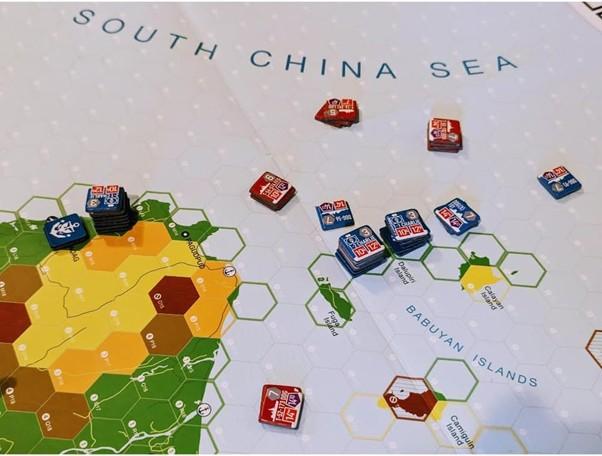
Key system themes. Littoral Commander is specifically designed to accommodate a variety of scenarios, setups, and victory conditions. Each side receives orders that outline the specific scenario, order of battle, command structure, Command Point (CP) allocation, enemy situation, victory conditions, and any other special or relevant information.
A turn in Littoral Commander is broken down into a series of alternating individual impulses between opposing teams to create a level of simultaneous action and micro-action-reaction dynamics. One turn refers to the duration of all players on all teams completing their actions (roughly representing two hours of real time). An impulse is an individual player’s opportunity to execute core actions in the game. For example, in a three versus three game, there will be six total individual impulses where players conduct actions in a single turn. Within each turn, the team with the initiative as outlined in the orders goes first. Initiative can change at the end of a turn based on the number of enemy units destroyed during the turn.
Typically, each player has three Action Points (APs) per turn. Alternate between opposing teams until all players have carried out their actions. Each player can perform three of the following Core Actions: Move and/or initiate Combat:
- Move and/or Conceal.
- Play a Joint Capability Card (JCC).
- Move and/or conduct Resupply.
Combat is the most decisive means to achieve the scenario objectives and deny success to the enemy. There are four basic types of combat in Littoral Commander: Ground Assault, Long-Range Strikes (LRS), Interception, and various JCCs. All combat is adjudicated using twenty-sided dice (D20). Units can only conduct LRS against reconnoitred enemy units (revealed) within their range. This highlights that targeting involves more than just the munition; you need to locate and track the target first.
JCCs abstract the intervention and support of higher-echelon and adjacent forces and capabilities. They provide enhancements to Fires, Manoeuvre, Interception, Information Operations, and C5ISR. Each JCC played during a player’s impulse costs a single AP. These JCCs need to be chosen carefully; there are exquisite but expensive cards. There are offensive and defensive cards, as well as cards that enhance your units, but these must be selected at the start of the game. Some effects are persistent, while others are for the individual impulse. In the scenario, each side is allocated a number of Command Points, which allow you to purchase the JCCs. The player with a plan that the JCCs complement usually wins.
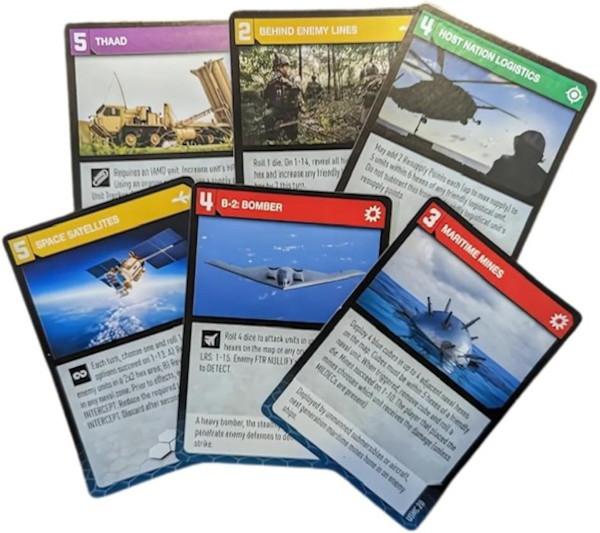
Ease of play and teaching. The base rule set is designed for ease of play for a broader audience. It takes about four hours to play the basic scenario, which includes an explanation of the rules and gameplay. The game achieves this by making intentional abstractions and simplifications. There is an advanced rule set for when players are familiar with the mechanics of the game. For example, you can introduce ‘an influence meter’ as a simple yet effective abstraction of global opinion on the war.
System Applicability. In terms of the level of war, this is a high-tactical wargame regarding the units on the board and low-operational if the Joint Capability Cards are used effectively. This is an educational and training wargame. It does not apply to policy or analysis.
As an educational wargame, Littoral Commander Australia allows players to explore the concepts of littoral warfare, multi-domain strike, integrated air and missile defence, and integrated ADF warfighting capabilities, with little to no experience in the game necessary to play. It may also assist players to understand Australia’s strategic challenges and the rationale for the recent NDS 24. It also reinforces the importance of concepts we learn in training, such as planning using the Deliberate Military Appreciation Process.
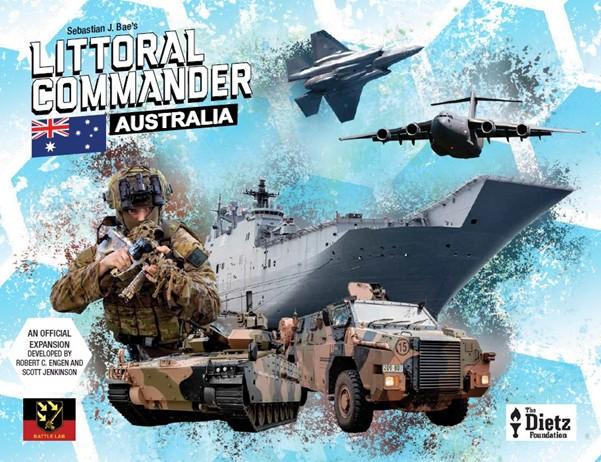
Littoral Commander Australia has been developed by Wing Commander Scott Jenkinson and Doctor Robert Engen PhD, who are current members of the Australian Defence College staff. It has been published and distributed with the support of the Army Battle Lab as part of the ongoing initiative to rejuvenate wargaming within the Army.
Overall Assessment.
Littoral Commander Indo-Pacific and Littoral Commander Australia are excellent educational wargames for Professional Military Education. They encompass all the essential elements that effective wargames should offer; they facilitate exploring what is effective in the contemporary battlespace and what is not, typically at low cost with minimal risk. Additionally, both sides have numerous options to trial safe-to-fail tactical experiments.
The strengths of the game include its relevance to NDS 24, its high level of tactical complexity, its accessibility, and the ability to play it within four hours. This game is pertinent for operational headquarters such as the Army’s formations, the Amphibious Task Group, and Headquarters Joint Operations Command. It aids in our planning process, teaches reveal/conceal techniques, and rewards multi-domain engagements. As an Army Officer, I believe it is not the most effective educational wargame for achieving the learning outcomes of the majority of the Army’s Training Establishments. Moreover, it does not contribute to the deterrence phase in international relations. However, this wargame is valuable for considering the opening phase of war.
The Army Battle Lab has produced 350 copies of Littoral Commander: Indo Pacific and the ADF expansion Littoral Commander: Australia for distribution to select Army units in the third quarter of 2025.
